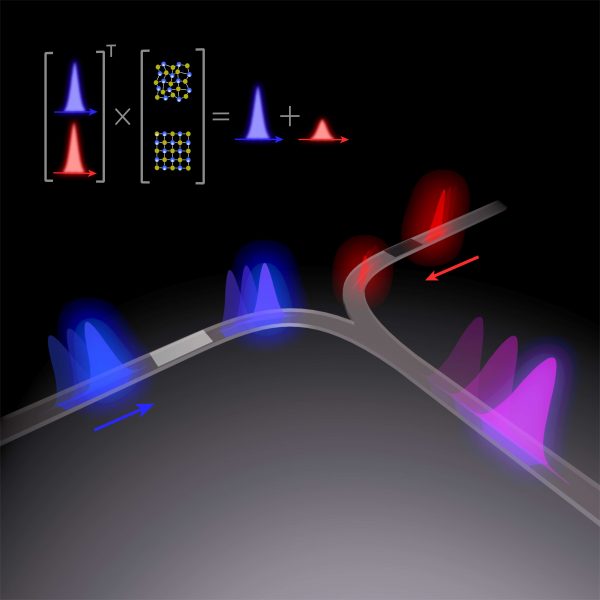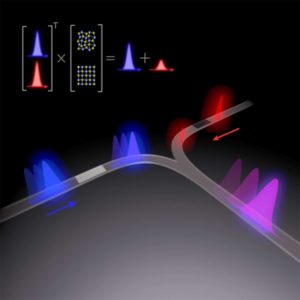In this video, IBM researchers describe an all-optical approach to developing direct in-memory multiplication on an integrated photonic device based on non-volatile multilevel phase-change memories. Using integrated photonic technology will potentially offer attractive solutions for using light to carry out computational tasks on a chip in future.
Today, our collaborative team of scientists led by Oxford and IBM Research-Zurich, with colleagues at Exeter and Munster, published a new research paper that points to its potential. Together we have developed an all-optical approach to developing direct in-memory multiplication on an integrated photonic device based on non-volatile multilevel phase-change memories. Electronic phase change memory (PCM) is an emerging non-volatile memory technology that could play a significant role in future computing systems. Using integrated photonic technology will potentially offer attractive solutions for using light to carry out computational tasks on a chip in future. This concept of implementing in-memory computing on an integrated photonic chip has the ability to further transform the computing landscape, especially since speeds and bandwidths working directly on an optical domain are increased. In a nutshell, this means faster detection, expanded operations, and decreased energy consumption.
In-memory computing already breaks the processor-memory dichotomy allowing processing to take place in the memory elements. An electrical implementation of such a system is able to carry out complex tasks such as scalar multiplications, correlation detection, and compressed sensing recovery. Moving from an electrical to an optical domain has even more advantages. In photonic implementations of in-memory computing on an integrated photonic chip, not only do speed and bandwidths increase, detection latency also improves as processing takes place directly on an optical domain using light.





